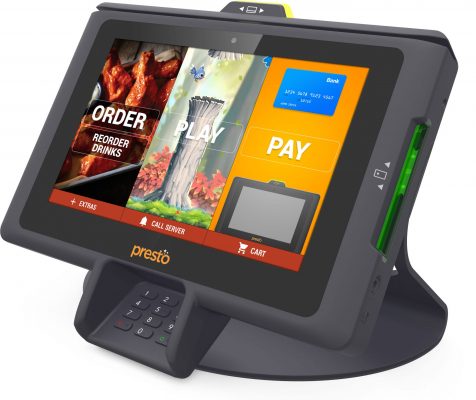
In January, 2018 the Applebee’s restaurant chain, kiosk maker E la Carte, Inc., and the National Federation of the Blind and LightHouse for the Blind and Visually Impaired announced a partnership. The collaboration worked to make E la Carte’s table-top ordering and payment kiosk accessible to blind people.
The system is used in Applebee’s restaurants across the country. The partnership, written into a settlement agreement, was the result of a Structured Negotiation.
Structured Negotiation allowed the parties to work together to develop and test new functionality for E la Carte’s table top kiosk / tablet called the PrestoPrime™ EMV System™ for full-service restaurants. Testing by blind consumers, and the related feedback, helped E la Carte provide a user-friendly experience for blind consumers.
Tim Elder was one of the lawyers representing the blind community in this Structured Negotiation:
In this case, which involved complex business arrangements involving franchisees, franchisors, technology licensees and service providers, Structured Negotiations was an effective way to bring everyone together to play their part, big or small, in a solution. The available parties that can be formally named in litigation may not always be the same people actually needed at the table to effectively solve a problem.Tim Elder, disability rights lawyer
Stuart Seaborn, litigation director of Disability Rights Advocates, also participated in the negotiation. While he wished the negotiation had been quicker,
one of the things that was really helpful about Structured Negotiation was getting the technical teams on all sides, including the third-party vendor, in the room with unfettered communication. That would have difficult in the context of discovery or even in mediation. Stuart Seaborn, disability rights lawyer
Congratulations to everyone involved in this collaboration that improved access to new technology in restaurants across the United States. This effort also protects the privacy and security of blind customers by allowing them to independently pay for their meals without have to share confidential credit card and other financial information.
This article is part of a Topic on this website about how other people have used Structured Negotiation to resolve legal claims with less conflict and cost. For Lainey’s Structured Negotiation cases, please visit the Settlements page of this website.
You can read more about Structured Negotiation, including how it allows people in a dispute to share information in a practical, cost-effective way that leads to win-win results, in Lainey’s book, Structured Negotiation, A Winning Alternative to Lawsuits.